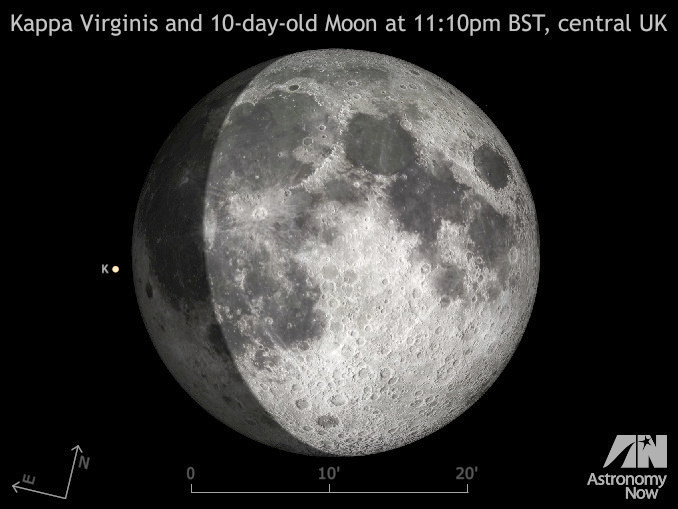
However, if you look closely at the vicinity of the Moon with a binocular or small telescope at 11pm BST on 15 June you will notice something else: a magnitude +4.2 star tantalisingly close to the advancing, darkened lunar hemisphere. This star is known as kappa (κ) Virginis and keep watching, for it is about to be occulted (hidden) by the Moon.
The actual time at which the Moon passes in front of κ Virginis depends on where you live. For London, the star’s disappearance occurs close to 11:19pm, while in Edinburgh, it happens somewhat earlier at 11:10pm. If you live close to the heart of the British Isles, then you can see κ Virginis wink out around 11:13pm (all times given in BST).
As with all occultation observations, it pays to be prepared and setup a few minutes before the appointed time so that you can savour the approach of the Moon to the star. Reflect, too, on the fact that Kappa Virginis (α=14h 12.9m, δ=-10°16′ J2000.0) is an orange K-type giant 23 times the diameter of our Sun, approximately 250 light-years from Earth.
Inside the magazine
Find out all you need to know about what is currently happening in the night sky and how to observe it in the June 2016 edition of Astronomy Now.
Never miss an issue by subscribing to the UK’s biggest astronomy magazine. Also available for iPad/iPhone and Android devices.




